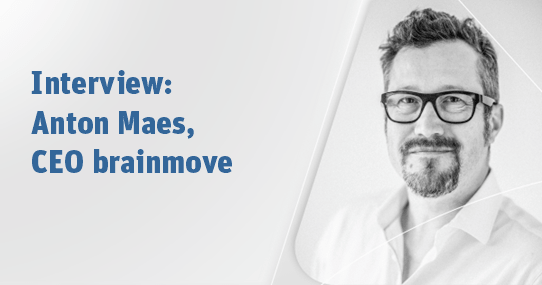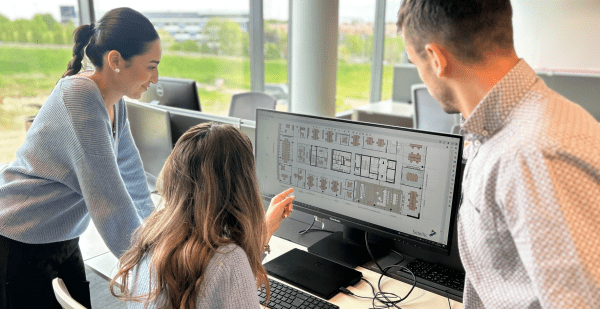
Gearing up for the Future
Satellic is the biggest toll operator in Belgium. It is driven by innovation and wanted its workplace to reflect its ambitions. Satellic embarked on a journey with brainmove to future proof its offices. Anton Maes, founder, CEO, Workplace Strategist & Change Manager at brainmove, shares his insights on the project with Satellic.

Can you briefly introduce yourself?
As a psychologist, I’m passionate about science and continuous learning. I am deeply interested in the intersection of workplace strategy and human behaviour and have made a career out of it. I have a background in communication, marketing and change management, having previously worked at GDF Suez. I also have a background in research, having served as an assistant within a university faculty of psychology.
Can you tell us some more about brainmove?
Moving boxes isn’t that difficult; however, redefining work on a strategic and human level certainly is. I founded brainmove 13 years ago to offer organisations independent, strategic, workplace guidance, based on scientific research. Our process begins with establishing a clear vision on how they would like to work and collaborate in the future. After conducting an analysis of the primary processes, we identify the characteristic ways in which the workplace is used. We build user profiles identifying the needs of the users and analysing the way they work. Our focus is on objectifying typical activities, forecasting the expected occupancy rate and determining the types of workplace alternatives, including traditional and flexible options. All of this to ensure a workplace concept that offers an optimal balance between well-being and productivity.
But the journey doesn’t end there?
No, after having addressed the optimal future workplace mix and what needs to be integrated into the new concept, the design process can begin. Since this often involves a fundamental change, we must make sure that the organisational culture is ready for it. We develop a change management trajectory, including communication plans, leadership and user training to ensure the smooth adoption of the new work environment. Our coaching and training programmes are always tailored to the needs of our clients.
How did brainmove and Satellic work together?
Satellic is a high-tech company that wanted to ensure that its workplace reflected that high-tech spirit, making it an environment that promotes sustainability, well-being and productivity. By focusing on key themes like teamwork, health and wellbeing, collaboration and employee experience, we helped Satellic create a workplace concept that is attractive, sustainable, future-proof and in line with its innovative approach.

What were the key elements of the collaboration?
Together, we developed a future-proof vision for its workplace focussed on boosting collaboration, knowledge sharing and informal interaction. After developing the vision, we analysed the processes of the different teams through interactive workshops. Satellic values innovation, collaboration and commitment. We made sure the workplace concept represented these values and we prepared a briefing for a top designer to develop an attractive work environment where employees feel comfortable and motivated. Our next mission is to provide support for users to facilitate the transition towards the new work environment, including leadership coaching to help managers lead effectively within the new context.
Do you share any common strengths?
We both share a commitment to evidence-based practices. In addition, both companies prioritise sustainable development and focus on optimising the use of space and promoting well-being. Satellic's vision for its workplace and brainmove's approach to guiding organisations in rethinking work are both designed to be future-proof and adaptable to changing times and contexts.
How has the approach towards the workplace evolved in recent years?
Over the past five years, we have witnessed an increased interest in user behaviour and psychology. As organisations have adapted to the aftermath of COVID-19, we have seen a growing need for flexible workplace concepts focussed on collaboration and knowledge exchange.
In what ways can a well-designed work environment impact organisations?
The work environment is crucially important for organisations and their employees. Today, workplace design has also been put on the HR agenda. A well-designed work environment can be compelling and attractive to current and prospective employees, helping to increase retention rates and improve recruitment efforts. It can also help to boost productivity and collaboration, as employees are provided with spaces that meet their needs and encourage teamwork.